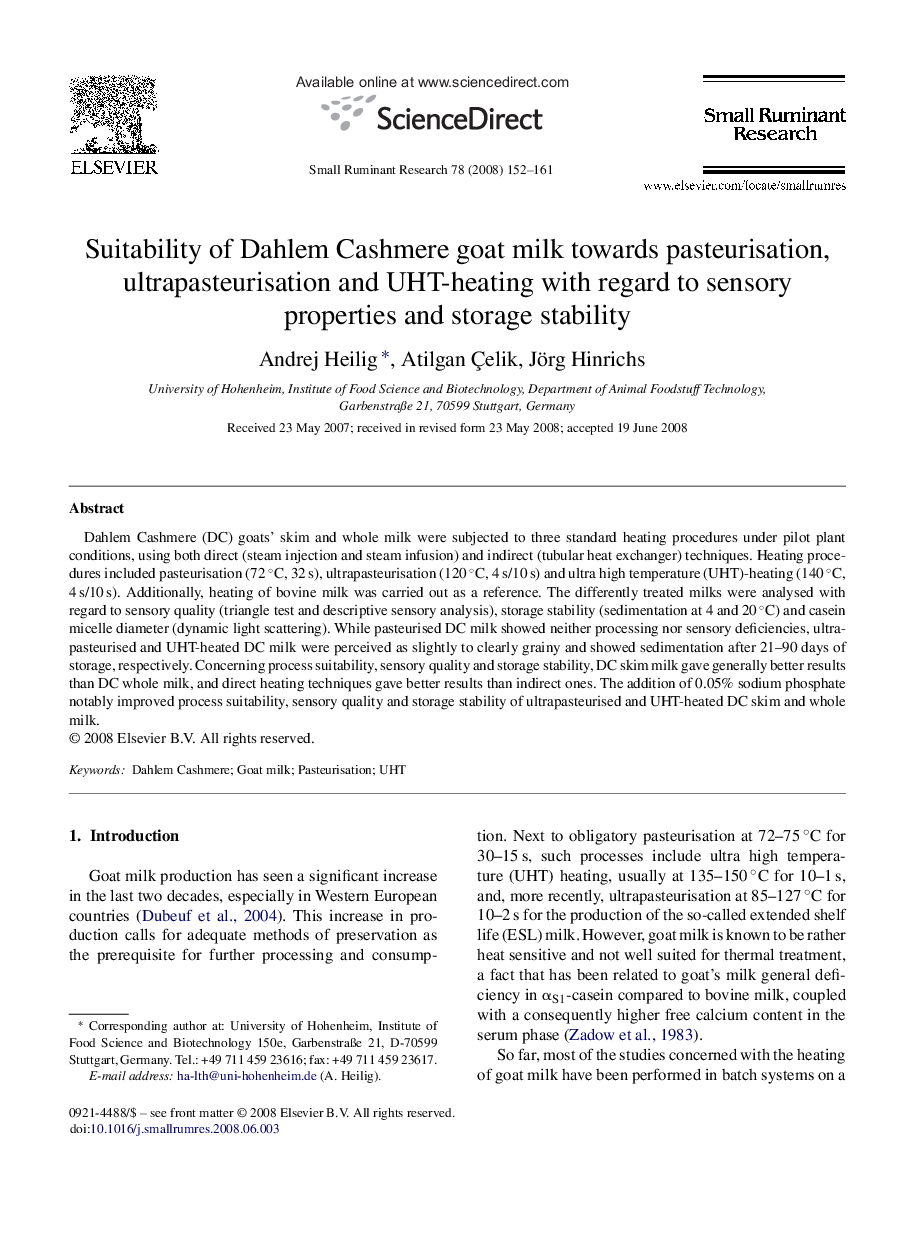| Article ID | Journal | Published Year | Pages | File Type |
|---|---|---|---|---|
| 2457890 | Small Ruminant Research | 2008 | 10 Pages |
Dahlem Cashmere (DC) goats’ skim and whole milk were subjected to three standard heating procedures under pilot plant conditions, using both direct (steam injection and steam infusion) and indirect (tubular heat exchanger) techniques. Heating procedures included pasteurisation (72 °C, 32 s), ultrapasteurisation (120 °C, 4 s/10 s) and ultra high temperature (UHT)-heating (140 °C, 4 s/10 s). Additionally, heating of bovine milk was carried out as a reference. The differently treated milks were analysed with regard to sensory quality (triangle test and descriptive sensory analysis), storage stability (sedimentation at 4 and 20 °C) and casein micelle diameter (dynamic light scattering). While pasteurised DC milk showed neither processing nor sensory deficiencies, ultrapasteurised and UHT-heated DC milk were perceived as slightly to clearly grainy and showed sedimentation after 21–90 days of storage, respectively. Concerning process suitability, sensory quality and storage stability, DC skim milk gave generally better results than DC whole milk, and direct heating techniques gave better results than indirect ones. The addition of 0.05% sodium phosphate notably improved process suitability, sensory quality and storage stability of ultrapasteurised and UHT-heated DC skim and whole milk.
